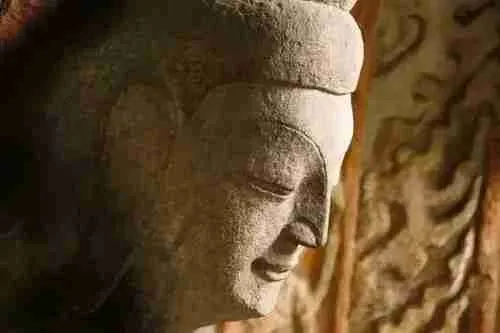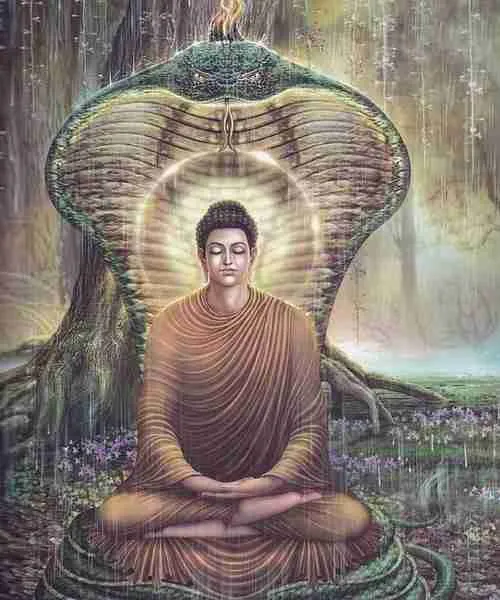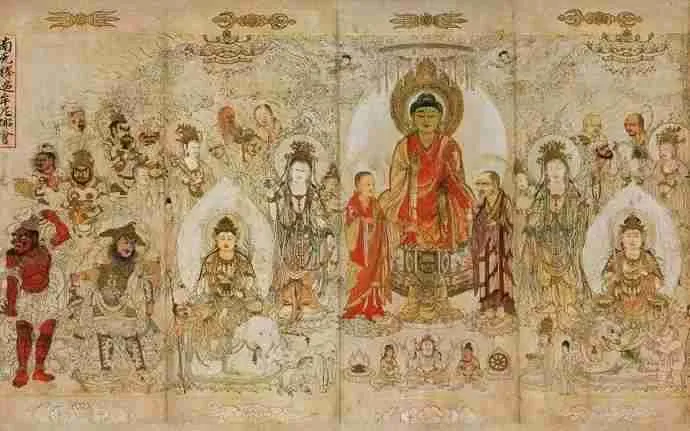Buddhism is one of the most popular religious beliefs in China, and it was essentially founded at around the same time as the other belief systems and philosophical schools of thought with Confucianism and Taoism. As a belief system that started in ancient China, there is quite a bit of history regarding how it started and its eventual assimilation in parts of China.
But what exactly is the Buddhist belief?

Buddhism was the 3rd most significant belief system in ancient China, and this religious belief has successfully stood the test of time, being even popular among the Chinese people than Confucianism and Taoism in the world today.
Buddhism religion was founded by Buddha or Siddhartha Gautama, who lived in India around the 6th century BCE, and it later spread to China and the rest of the world. Its fast spread and popularity come from the fact that Buddhism is more of a philosophy focusing on personal development, as well as the attainment of a deep level of knowledge and understanding. Essentially, all Buddhism believers seek to attain enlightenment, and this often happens through spiritual learning, meditation, and practice. The Buddhists also believe in reincarnation and also the impermanence of life, and also how life is full of uncertainty and suffering, and with all these, a belief that the only way to find peace is by reaching Nirvana. Nirvana is an important aspect of Buddhism, and it represents a deeply joyful state that is beyond human suffering.
But Buddhism, like many other religious belief systems, features varying sects that always emphasize different important aspects of the belief of Buddhism. But only two of these sects have had the biggest influence on both ancient China and modern Buddhist China. These are – Theravada Buddhism that’s based primarily in Southern Asia, and from East Asia, Mahayana Buddhism.
It’s worth noting that the Chinese Buddhists’ belief systems are a combination of the Buddhist and the Taoist belief systems, and they pray to both the Taoist gods and to Buddha. And like the Taoists, the Chinese Buddhists also hold ancestors in high regard, and they believe that they must pray to the ancestors often and when they need their help. This is often seen in the Qingming Festival, where ancestral worship and reverence is seen in religious ceremonies and also in festivals like this.
The 1st century BC Buddhist doctrines note that Buddha taught 4 Noble Truths – that suffering is part of humane existence, that the origin of all suffering is craving for sensuality, that suffering is not permanent and can be ended, and lastly, the acquisition of identity and also annihilation. All these are followed by what’s called the Noble Eightfold Path, which is the means to accomplishing the 4 Noble Truths. The Noble Eightfold Path features the following – right understanding, right speech, right thought, right action, right concentration, right mindfulness, right effort, and right livelihood.
Buddhism Origin
Though Buddhism was founded in India by Buddha, as mentioned above, it spread rather quickly to China among other parts of the world. However, its spread and popularity in China is unlike any other, and it was already a big religious and philosophical belief system in ancient China by the 1st Century.
It’s, however, quite interesting to note that the popularity of Buddhism wasn’t just because it was a strong and very convincing religion on its own; its popularity came from the Taoist influence. Many of the Buddhist practices introduced in Ancient China were similar to the Taoist practices, and this made for easy adoption of the new belief system among new believers and also with Taoist beliefs. In most cases, the Buddhist monks used some of the Taoist concepts when explaining Buddhist beliefs to the Chinese, and this meant that the language and cultural barriers between the Chinese and the Indians were closed easily. Buddhism also influenced Taoism, especially the Taoist institutions and their structures. These two religions would soon be in some form of symbiotic relationship as the Taoists started to copy and modify some of the Buddhist beliefs to match the beliefs held in Taoism. Naturally, this led to competition between the two religions, with both the Taoist and the Buddhist leaders looking for ways of gaining more followers and having a higher level of influence on the government. Buddhism proved a more successful religion, and Buddhist concepts became more prevalent, especially because of the merging of the Taoist and Confucian ideas into some of the Buddhist teachings. All these meant that Buddhism became the basis of the ancient Chinese governments and societies. Buddhism also influenced Chinese architecture, art, as well as literature.
Today, Chinese Buddhism is the largest of China’s largest institutionalized regions, with a huge chunk of the Buddhist population based in Mainland China.
Buddhism In China History
Buddhism first made its way into ancient China during the reign of the Han Dynasty of between 202 and 220BCE, through the Indian missionaries who spread the religion in China. Even so, there is still an ongoing debate on this, especially because it is not known exactly when religion was introduced in China. However, most scholars believe that Buddhism first made its way to China or Han China through both the overland routes from the Silk Road and maritime routes proposed by Liang Qichao as well as Paul Pelliot, who note that the Buddhist beliefs made their way to China from the Southern parts of China, through the Yangtze and the Huai River regions. There are other people who believe that Buddhism must have entered China through the Northwest region at the Gansu Corridor, into the Yellow River Basin, and also the Northern China Plains in the 1st century CE. In this second hypothesis, the Buddhist monks and believers ended up in Luoyang; they started their missionary and translation activities – these depictions are in the book called Book of the Later Han, which shows the prominence of the Buddhist religion and the monks during the reign of the Han. The overland Silk Road hypothesis also points to Buddhist practices first practiced during the reign of the Han dynasty in Luoyang. These varying accounts point to a large central starting point for Buddhist beliefs in China.
As debates on this rage, it’s worth noting that Chinese Buddhism essentially started out as a form of Hindu influence in India into China from the 1st Century BC. The Buddhist scriptures share more on this, but this is the general view of how Buddhism got into and spread in China.
It’s worth noting that throughout Chinese history, the Chinese Buddhist and Buddhism, in general, all received an equal mix of immense support and persecution from the rulers. Some of the rulers went as far as ordering the destruction of the scriptures and the Buddhist temples, all in an attempt to completely get rid of the religion. Then between 221 and 206BC, during the reign of the Qin Dynasty, Emperor Qin Shi Huang made a decree that led to the banning of all the religions in Ancient China, forcing the adoption of the Legalism philosophy instead. So, while it’s possible that the Buddhist teachers and monks had already arrived in China at the time, there is no actual evidence in support of the introduction of Buddhism at the time. And only the accounts from the Han dynasty show how and when Buddhism actually started and how the Buddhist beliefs merged with belief systems from Taoism and the Chinese folk religions.
After the fall of the Han dynasty, the following dynasties went on to adopt their own religions, and they even had varying decrees regarding contact with the Buddhists from South, Central, and Southeast Asia.
Buddhism In China Timeline

- Han Dynasty (206-220BCE) – First introduction of Buddhist practices in China. This period has the earliest arrival of Buddhism, the translation of the religion, and the formation of the first Buddhist schools.
- Six Dynasties Period (220-589) – acceptance and rejection of Buddhism and the adoption of Taoist beliefs into Buddhism
- Southern & Northern Dynasties (420–589) and the Sui Dynasty (589–618) – Teachings on Zen
- Tang Dynasty (618–907 CE) – more Buddhist institutions formed, and Buddhist influence on arts, technology, and caves took root.
- 5 Dynasties & 10 Kingdoms Period (907–960/979) – Limited support to Buddhism
- Song Dynasty (960–1279) – Merging of Confucian and Daoist beliefs with Buddhism. Also, thousands of Buddhist monks and nuns lived in China then.
- Mongol Yuan rule (1279–1368) – esoteric Buddhism made China’s official religion, thanks to the domination of the Mongol Yuan.
- Ming dynasty (1368–1644) – mixed Buddhist systems and sects crop up with the revival of Huayan, Tiantai, and Yogacara traditions. Eminent monks and nuns rose.
- Qing dynasty (1644–1911) – Tibetan Buddhism school founded (Gelukpa School) after endorsement from the Qing Court.
When Did Buddhism Arrive In China?
Buddhism arrived in China during the time of the Han dynasty though it may have arrived in the previous reign period of the Qin.
What Happened To Buddhism In China?
Buddhism became quite popular during the reign of the Han Dynasty, and it became popular to the end of the Tang Dynasty’s reign – of course, there were many ups and downs in between, but the religion prevailed for the longest time. But in the end, during the reign of the Tang Dynasties, many Taoists had turned against the Buddhists, and they destroyed thousands of Buddhist monasteries, as well as tens of thousands of Buddhist temples.
What Were The Effects Of Buddhism In China?
Although Buddhism received an equal share of support and persecution from the ancient Chinese rulers and people, it managed to be the most influential of all Chinese religions, and after Buddhism was first introduced in China, the religion and its belief systems impacted pretty much all of the Chinese systems and ways of life.
Buddhism promoted the immense development of Chinese philosophy, language, ethics, arts, religion, and literature, as well as their popular beliefs.
What this means is that over the many years of Buddhist belief in China, this religion has had interactions with pretty much all the levels of Chinese culture, and it’s been integrated into the traditional Chinese cultures, becoming one of China’s 3 main pillars.
Why Did Buddhism Become Popular In China?
Buddhism was introduced in China by Buddhist monks from China, and soon after, it became an important part of the Han Dynasty’s rule.
But it’s not just the support of the government that made Buddhism such a huge success as it was assimilated into most parts of the Chinese culture. The biggest reason for the success of the Buddhist beliefs in ancient China has to be Taoism and the fact that Buddhism took in some of the important Daoist beliefs and integrated them into Buddhism, making the Buddhist beliefs more relatable and acceptable to the people who were already aware of and in support of the Taoism. Later on, the adoption or incorporation of Confucian beliefs into the Buddhist teachings led to the success of the Buddhism belief system.
How Many Buddhists Are There in China?

China has the largest Buddhist population, with an estimate of between 185 and 250 million believers.
Famous Buddhist Temples In China
- The Temple of Heaven (Beijing)
- Nanshan Temple (Sanya)
- South Putuo Temple (Xiamen)
- Famen Temple (Xi’an)
- Jokhang Temple (Lhasa)
- Wannian Temple (Mount Emei)
- Yonghe Lama Temple (Beijing)
- White Horse Temple (Luoyang)
- Daxiangguo Temple (Kaifeng)
- Lingyin Temple (Hangzhou)
Famous Buddhist Statues In China
- 208m Henan Foquan Temple Buddha (Spring Buddha), in Henan
- 108m Sanya Guan Yin of the South Sea, in Sanya
- 99m Guishan Guan Yin of Thousand Hands and Eyes in Hunan Province
- 88m Lingshan Grand Buddha in Massan Mountain
- 71m Leshan Giant Buddha in Sichuan Province’s Leshan City
- 62m Foshan Guan Yin of the South China Sea on Xiqiao Mountain.
Buddhist Quotes In Chinese
- Everything is unreal. 一切皆为虚幻。
- Form itself is emptiness, emptiness itself is form. 色即是空,空即是色。
- Do not speak unless you can improve the silence. 不可说, 说即是错。
- Great sadness is tearless, supreme enlightenment is wordless, loud laughter is silent. 大悲无泪,大悟无言,大笑无声。
- It is the 500 times of looking back in the preexistence that we get the chance of passing by each other in this life. 前生500次的回眸才换得今生的一次擦肩而过。
- A butcher becomes a Buddha the moment he drops his cleaver. 放下屠刀,立地成佛。
- If a martyr should be sacrificed for this, why not me? 我不入地狱,谁入地狱。